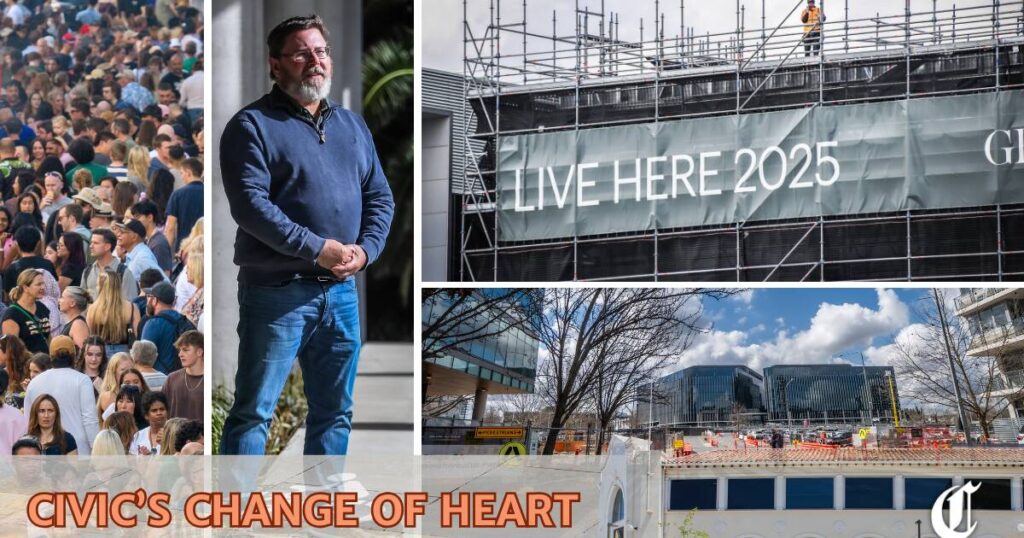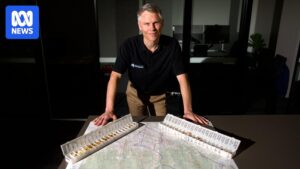
As Canberra braces for a population surge to 800,000 within the next 40 years, the focus intensifies on Civic, poised to evolve into a bustling metropolis. The city center’s population is expected to more than triple by 2040, soaring from approximately 6,000 to 22,000 residents.
This dramatic growth, outlined in the ACT government’s City Plan, necessitates the construction of an additional 8,700 dwellings, predominantly apartments, to accommodate young adults aged 20-34 and older adults over 60. The plan reflects current demographic trends and suggests a future where families may find fewer housing options in the city center.
Civic’s Infrastructure Overhaul
The ongoing transformation of Civic is evident in the extensive infrastructure projects reshaping the area. The completion of the London Circuit, a significant milestone, marks just one phase of a broader revitalization effort. This includes the ambitious light rail stage 2A project, with London Circuit at its core.
Infrastructure Canberra describes these changes as a “once-in-a-generation transformation,” emphasizing the scope and impact of the developments. New walking paths, cycle lanes, and additional parking facilities are already in place, while a new 2,000-seat theatre is set to enhance Civic’s cultural landscape.
Challenges and Opportunities
Despite the progress, the disruption caused by construction is palpable. Garema Place is undergoing repaving, a new hotel is rising on Bunda Street, and the noise and inconvenience are unavoidable. Yet, the vision for a vibrant, green city center remains compelling.
Professor James Raymer, co-director of the Australian National University’s Population Lab, remains optimistic about Canberra’s capacity to manage growth. Drawing on his experiences in cities like Shanghai, Raymer asserts, “So long as there’s water, cities like Canberra can easily accommodate significant population growth.”
Demographic Shifts and Planning
The City Plan’s focus on young and older adults raises questions about the inclusivity of Civic’s future. The absence of new schools in the plan underscores a deliberate strategy to concentrate populations in the city center, leveraging efficiencies in public transport and utilities.
Raymer notes the potential benefits of urban concentration, highlighting the economic advantages of growth, such as increased jobs and improved city centers. However, he acknowledges the plan’s limitations, particularly its exclusion of families from the city center’s lifestyle and infrastructure.
The Five Precincts of Civic
The City Plan divides Civic into five distinct precincts, each with unique characteristics. City Hill, at the National Triangle’s apex, remains uninhabited, while City North-East, the commercial heart, has a median age of 30. City North-West, linked to the ANU campus, is the youngest precinct with a median age of 23.
City South-East, encompassing tourism and education hubs, has a median age of 35, with a notable proportion of residents over 60. West Basin and Acton Waterfront are poised to become lively urban precincts, further integrating Civic with the lakefront.
Looking Ahead: Balancing Growth and Livability
As Civic prepares for its transformation, the ACT government faces the challenge of balancing growth with livability. The emphasis on young and older adults reflects a strategic choice, yet it raises questions about the inclusivity of Civic’s future.
While schools exist beyond Civic’s limits, the plan’s focus on specific demographics may limit the city’s appeal to a broader population. As Raymer suggests, “Not everyone wants or needs a house with a garden, and many prefer to live centrally.”
The evolution of Civic is a microcosm of Canberra’s broader growth narrative. As the city center adapts to demographic shifts, the challenge will be to create a vibrant, inclusive community that meets the needs of all residents, now and in the future.







